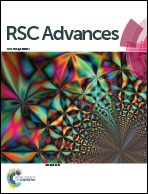Origin of surface potential in undoped zinc oxide films revealed by advanced scanning probe microscopy techniques
Abstract
This paper presents recent studies combining piezoresponse force microscopy and Kelvin probe force microscopy to reveal the origin of bias-induced changes of surface potential in undoped zinc oxide (ZnO) films at the nanoscale. Surface potential under dc bias in ZnO films is studied using Kelvin probe force microscopy (KPFM). In addition, the piezoelectric properties of the ZnO are investigated by applying voltage using piezoresponse force microscopy (PFM), which is adopted to provide new physical insight into the important role of polarization charge in surface potential. PFM and KPFM results suggest that the origin of surface potential under an electric field in undoped ZnO film is determined by polarization charge, injection charge and surface charge. In addition, significant change in the Fermi level (work function) of undoped ZnO is found by positive (negative) biasing. The qualitative and quantitative study of surface potential and charge trapping properties can be useful for designing advanced nanoscale nonvolatile memory devices.



 Please wait while we load your content...
Please wait while we load your content...